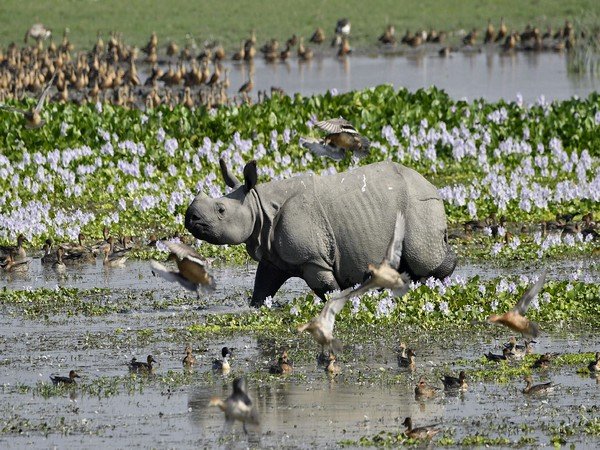Tackling India’s Learning Deficit: The Imperative of Student Engagement
Introduction:
The Annual Status of Education Report 2023 highlights a concerning trend: while over 86.8% of individuals aged 14-18 are enrolled in educational institutions, a quarter of them struggle to read a Class 2-level text fluently in regional languages.
Persistent Learning Deficit:
- India faces a longstanding learning deficit despite increased awareness, as evidenced
by Pratham’s annual surveys
- Low attendance in public schools leads to limited learning outcomes, contributing to a lack of perceived value in education among children and parents.
Challenges in Classroom Engagement:
- Many classrooms lack meaningful engagement, with teachers primarily focusing on
front-row students and resorting to rote learning methods
- Rote learning is insufficient in preparing students for evolving skill demands in a fast- changing world.
Need for Student Engagement:
- Effective learning environments require active student engagement, where every child is involved, curious, and encouraged to participate
- Teachers play a crucial role in fostering engagement, but systemic issues hinder widespread implementation.
Addressing Teacher Training:
- Teacher education in India tends to be theoretical, lacking practical training opportunities and feedback mechanisms.
- A shift towards practical, engaging training methods is essential to equip teachers with effective teaching strategies.
Supporting Teachers:
Teachers require ongoing coaching and support to adopt new teaching practices and foster student engagement effectively.
Focus on Right to Learning:
- Emphasizes the need to shift focus from the Right to Education to the Right to
Learning.
- Calls for structured lessons, quality teacher-student relationships, and student autonomy to enhance engagement and learning outcomes.
Conclusion:
Advocates for prioritizing student engagement in classrooms to address India’s persistent learning deficit, stressing the importance of practical training for teachers and a shift towards a culture of active learning.
Navigating the Intersection of Politics and Constitutional Roles: Calls for a Cooling-Off Period
Background:
- Recent resignations of a Calcutta High Court judge and a senior IPS officer to join political parties spark debate
- Constitutional authorities like judges, CAG, and Public Service Commission members face scrutiny over post-retirement political affiliations.
Constitutional Restrictions:
- Constitutional bodies enjoy independence via fixed tenures, financial autonomy, and stringent post-retirement restrictions.
- Judges face restrictions on practising law post-retirement, while CAG and Public Service Commission members are barred from government employment.
Political Engagement Post-Retirement:
- No constitutional barriers exist for joining political parties, contesting elections, or holding political appointments post-retirement.
- Historical instances include retired judges contesting elections, former CEC becoming a Minister, and ex-CJI nominated to Rajya Sabha.
Recommendations and Debate:
- In 2012, Election Commission proposed a cooling-off period for retired bureaucrats entering politics, but the idea was rejected
- Supreme Court dismissed a plea seeking legislation for a cooling-off period, leaving the matter to the legislature’s discretion.
Desirability of Cooling-Off Period:
- Advocates argue that a cooling-off period would maintain neutrality and uphold democratic principles.
- Counterarguments suggest such restrictions may not align with democratic ideals and could impede citizens’ right to contest elections.
- Proposal for a modest cooling-off period, perhaps two years, aims to bolster public trust and mitigate perceptions of favouritism or quid pro quo.
Supreme Court Halts Withdrawal of Pobitora Wildlife Sanctuary Notification
Background:
- The Assam government sought to revoke a 1998 notification establishing the Pobitora Wildlife Sanctuary, home to a significant rhino population.
- The Cabinet decision on March 10 aimed to withdraw the notification due to alleged unilateral issuance by the Forest Department without broader consultation.
Supreme Court Intervention:
- A Supreme Court bench ordered a freeze on the state government’s move to withdraw the 1998 notification.
- JusticesR. Gavai and Sandeep Mehta deemed the government’s decision improper and directed no further action regarding the withdrawal.
Government’s Justification:
- The Assam government cited concerns over unresolved rights of marginalized communities residing in the sanctuary area before Independence.
- It established a committee to assess forest dwellers’ rights and propose a revised notification for the Pobitora region.
Court’s Response and Clarifications:
- The bench rejected the notion of de-notification, emphasizing the need for permission from the National Board of Wildlife.
- JusticeGavai emphasized that withdrawals of sanctuary notifications require legal compliance and cannot be unilateral decisions.
- Assam’scounsel asserted that the withdrawal aimed to rectify demarcation errors, with plans to issue a fresh notification.
- The court questioned the delayed awareness of the alleged error and instructed the state to submit a detailed counter-affidavit.
Future Steps:
The court’s order does not obstruct the state’s efforts to protect forest dwellers’ rights, but it calls for adherence to legal procedures and consultation.
About Pobitora wildlife sanctuary
- Pobitora Wildlife Sanctuary, situated in the flood plains of the Brahmaputra River in Assam’s Morigaon district, boasts the world’s highest density of rhinoceroses, second only to Kaziranga National Park in Assam.
- Often dubbed as ‘Mini Kaziranga’ due to its similar landscape and substantial one-horned rhino population, the sanctuary is a haven for diverse wildlife.
- Among its fauna are leopards, leopard cats, fishing cats, jungle cats, feral buffalo, wild
pigs, Chinese pangolins, and more.
- The sanctuary’s flora primarily consists of wet savannah dominated by Arundo donax and Saccharum, with the remaining area covered by water bodies.

